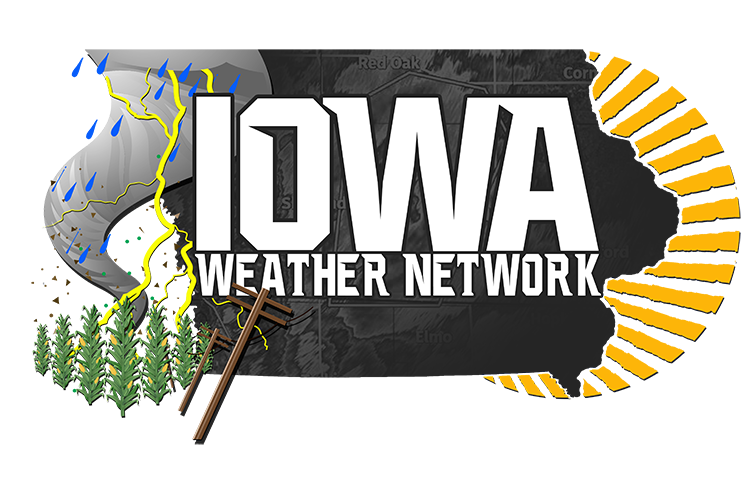← Previous May 19, 2024 3:04 AM
FOUS30 KWBC 190804 QPFERD Excessive Rainfall Discussion NWS Weather Prediction Center College Park MD 404 AM EDT Sun May 19 2024 Day 1 Valid 12Z Sun May 19 2024 - 12Z Mon May 20 2024 ...THERE IS A MARGINAL RISK OF EXCESSIVE RAINFALL FOR PORTIONS OF THE CENTRAL PLAINS, UPPER MIDWEST, AND COASTAL SOUTH CAROLINA/GEORGIA... ...Central Plains through the Corn Belt... Southwesterly flow east of the Rockies in the mid/upper levels will carry waves of vorticity across the central Plains into the Corn Belt today/tonight, culminating in a more coherent/robust vort max out of NE into Iowa overnight. Surface frontal boundary through CO/KS will lift back northward today as a warm front with increasingmoisture in the boundary layer (precipitable water values ~1.50" or +1.5 sigma), leading to a severe weather threat over KS late this afternoon. Additionally, warm front lifting through Iowa will help spur some rainfall (though generally beneficial) atop relatively lower FFG values (compared to KS). 00Z HREF probs for exceeding FFG values run about 10-50% from KS northeastward to southern MN, roughly in line with the Marginal Risk outline and weighted toward late afternoon into the overnight hours as the stronger vort max moves through. Question will be the details of the mode of convection and how things play out downstream. ...Coastal South Carolina and Georgia... Vort max over northern GA this morning will slip southeastward across the coastal areas this afternoon, yielding another chance for showers/storms as it passes overhead. Maintained the Marginal Risk for this area of coastal GA/SC beneath its path where surface convergence is greater. 00Z HREF probs of exceeding FFG values (~3"/3h) climb as high as 40% in a very small area where CAPE will be sufficient. Urban areas will be most susceptible. Fracasso Day 2 Valid 12Z Mon May 20 2024 - 12Z Tue May 21 2024 ...THERE IS A MARGINAL RISK OF EXCESSIVE RAINFALL FOR PORTIONS OF THE CENTRAL PLAINS/CORN BELT... Similar upper pattern over the central US on Monday but with changes upstream over the West. A southern stream shortwave will race through the southern Rockies just ahead of a digging northern stream trough into the northern Great Basin. Likely convection late Sunday/early Monday may leave the area rather stable for the daytime Monday, though the lingering frontal boundary will act as a focus for some rainfall into the afternoon. Any heavier rainfall may hold until overnight (00-12Z Tue) as the shortwave exits CO and the LLJ increases. Heavier rainfall may lie over the NE Sand Hills where FFG values are much higher, so the Marginal Risk outline is on the smaller side to the south and east of this region for any overnight isolated heavier rainfall as surface cyclogenesis starts in earnest. Fracasso Day 3 Valid 12Z Tue May 21 2024 - 12Z Wed May 22 2024 ...THERE IS A SLIGHT RISK OF EXCESSIVE RAINFALL FOR PORTIONS OF THE UPPER MIDWEST... Robust southern stream shortwave over eastern CO Tuesday morning will head northeastward into southwestern MN by early evening as surface low pressure deepens below 990mb over northeastern MN at the end of the period. Strong southerly flow in the BL (850mb winds to 50kts) will help surge moisture northward into and around the low, with precipitable water values climbing to over 1.50" which is about +2 sigma and 850-700mb moisture flux anomalies > +5 sigma from MO northward to MN/WI. QPF mode will be deformation-driven on the NW side of the wrapped-up/occluded low where rates will be modest but perhaps exceeding longer-time FFG values vs warm-sector QPF (MO northward/northeastward) where instability will be present (CAPE > 2000 J/kg as far north as northern IA). The entire system will be rather progressive, but expansive. Focused the Slight Risk on the warm sector rainfall and nosed back toward eastern SD where FFG values are lower than points farther west (covered by the Slight Risk). Models show various axes of QPF tied to different forcings in the evolution of the system, which is covered by the broad Marginal Risk outline eastward to Lake Michigan. AI guidance was displaced a bit to the east of the dynamical parent models, but this was also reflected in the ensemble systems as well (GEFS/ECMWF/GEPS). QPF spread was largest well into the warm sector (MO into the Ozarks) where the flash flood threat may be more isolated depending on the convective evolution. Fracasso Day 1 threat area: https://www.wpc.ncep.noaa.gov/qpf/94epoints.txt Day 2 threat area: https://www.wpc.ncep.noaa.gov/qpf/98epoints.txt Day 3 threat area: https://www.wpc.ncep.noaa.gov/qpf/99epoints.txt
